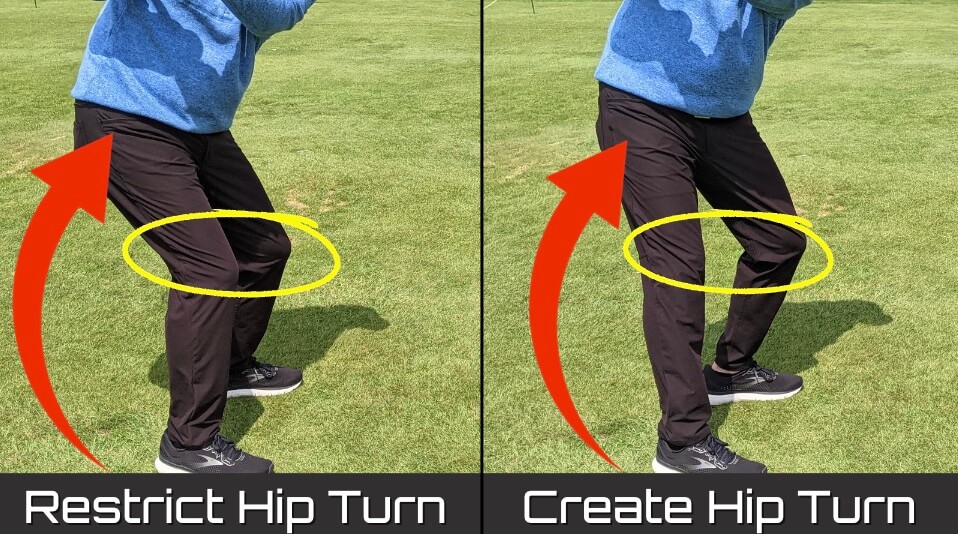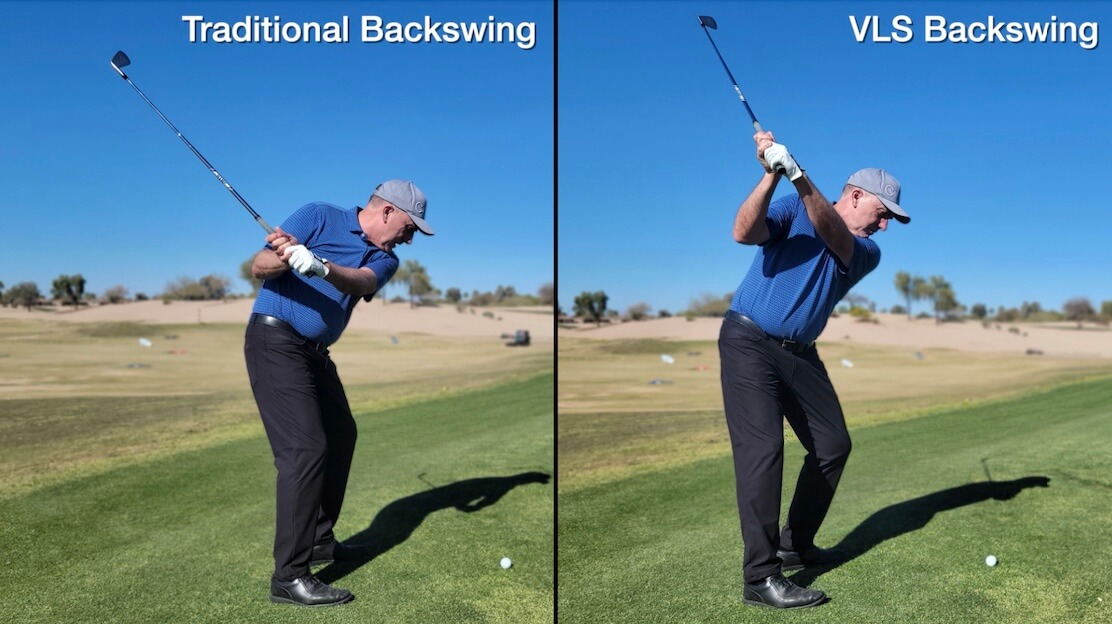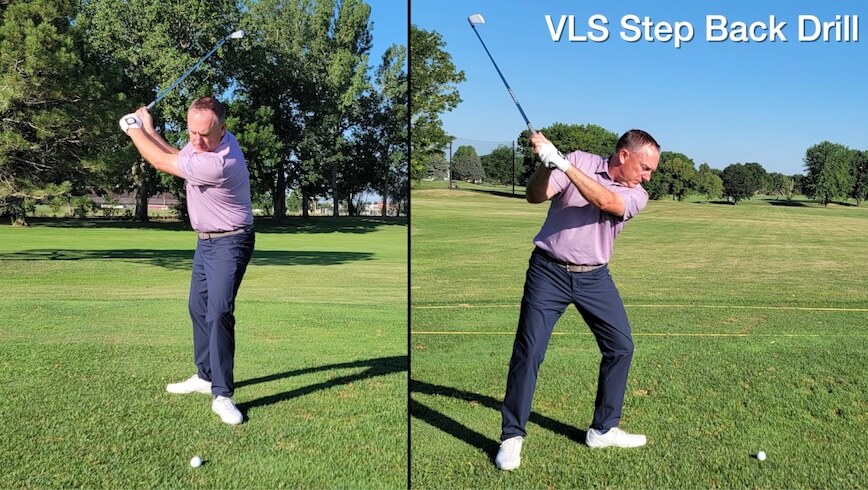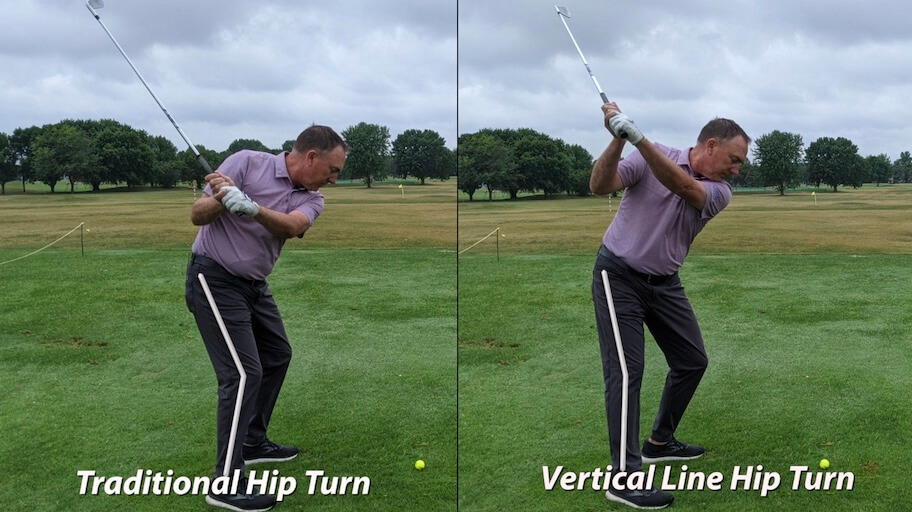How Does Hip Rotation Affect Your Golf Swing?
Is Hip Rotation in the Golf Swing REALLY the Distance Killer People Claim It Is? This is What I Wish All Senior Golfers Knew.
I want to talk about a controversial topic: hip rotation in the golf swing.
As a golfer, you may have struggled to get a clear answer on whether or not hip turn is a good thing. There are a lot of mixed (and heated) opinions on this subject in the golf instruction industry.
There are those who will swear you must restrict your hips on the backswing to deliver sufficient power on impact.
These folks consider hip restriction essential because it’s what many of the best players in the game do. It’s a strategy that gets results for professional golfers, so shouldn’t it be good enough for you?
Problem is, professional golfers have a few things going for them that the rest of us don’t. They’re extremely flexible, for one thing. Plus, golf is their day job, which means they can and should invest a lot of time in the kind of physical conditioning that allows them to twist like that.
Then there are the physical therapists and massage therapists available to help them recover.
In short, hip restriction is great for tour professionals, but you and I aren’t them.
That’s why I’m a firm believer that you’ve got to get some hip rotation in the golf swing, especially as you get older and lose range of motion. No matter what your favorite golfer does, hip rotation is your secret to more power, longer distance, and less pain.
I’m going to break down the three things you gain when you let your hips move on the backswing. I’ll also give you a drill to build the habit and a checkpoint to make sure it’s happening.
Let’s get into it.
3 Solid Reasons for Putting Hip Rotation in Your Golf Swing
Rotating your hips isn’t just about making your golf swing easier. It’s also going to get better results. You may even play a better game than you did when you were young, flexible, and could create coil without needing a week to recover.

Here are three reasons why hip rotation is a true power move:
#1: It Lengthens Your Backswing
Traditional golf instruction tells you to restrict your hips in the backswing and keep your trail knee flexed. But if you don’t have the flexibility of a young, elite athlete, this strategy will restrict your shoulder turn, too.
As a result, you won’t get much upper body rotation, which means a short swing: a guaranteed distance killer.
On the other hand, if you allow for some hip rotation in your golf swing and let that trail knee relax on the backswing, you’ll see a lot more turn in your shoulders. You can even try it right now, wherever you are, without a golf club.

Take a couple imaginary swings. Try one with hip restriction and see how far your shoulders turn. Then try it with hip rotation. Let your trail knee relax and your lead knee flex as you swing back. How much length are you getting now? A lot more, right?
That longer swing is going to translate to better distance.
#2: It Improves Your Rhythm and Tempo
I’ve developed a strategy specifically for the everyday golfer and senior golfer called the VLS or Vertical Line Swing (VLS) System. It’s a method that focuses on playing an incredible game with the body and practice time you actually have instead of straining to emulate world-class players.
You can learn more about VLS here, but for now, I’ll just say that weight shift is a key ingredient in this method.
When you set up for a golf shot, you want to start with about 60% of your weight or body pressure in your lead foot. That leaves about 40% in your trail foot.
As you swing back, you shift the majority of your weight into your trail foot. Then as you swing forward the weight returns to your lead foot. In short, the pressure in your feet follows the path of the clubhead.
Quick note: to remain steady, you want to focus the pressure shift towards the inside of the foot. If you shift the weight to the outside, you’ll throw yourself off balance. That’s what’s known as “sway.”
Now, there are several benefits to shifting your weight like this throughout your swing. One major perk is that it improves your contact, because it ensures the low point of your swing happens at the right time.
And one huge win for “experienced” golfers is that it generates swing speed without the need for deep rotation or raw power.
But what does any of this have to do with hip rotation?
Simply put, turning your hips in the backswing is a more natural movement that promotes the rhythm and tempo you need for a steady back-and-forth weight shift. Restriction, on the other hand, locks things up. Your rhythm and tempo suffer, and so do your speed and distance.
#3: You’ll Probably Feel Better After a Round of Golf
I put this one last, but it’s probably the most important.
Now, I’m not a doctor. I can’t diagnose your aches and pains after a round or make any promises about how you’ll feel when you follow my advice.
What I can say is that when you allow hip rotation in your golf swing, you opt for a free and natural swing motion. Hip restriction, on the other hand, fights what your body wants to do. It demands extreme twisting and can put more strain on your lower back.
All the amateur golfers I’ve worked with—especially senior golfers—feel a lot better when they rotate their hips. This means less time recovering and more time on the course.
My Favorite Drill for Creating Hip Rotation in the Golf Swing
If you’ve been restricting your hips for a decade or two or four, it might take a conscious effort to let them move, at least at first.
I’ve got a drill that’ll help you get the feel for it pretty quickly. It’s a drill I teach in my VLS series. You can use it on the driving range or even make it your pre-shot routine until hip rotation becomes a habit. It works like this:
Step Back Drill
- Take your regular setup without a golf ball.
- On the back swing, step your trail foot back behind your body.
- As you swing down, return your trail foot to its original position. (You don’t have to complete the swing.)
- Do three practice swings just like that, then step up to the ball and take a real shot, maintaining the same hip rotation without moving your trail foot.

This drill is effective because your hips have to rotate in order for you to step back with your trail foot. That step allows you to find rotation without thinking about it so you can get a feel for it.
Now, let’s say you’ve been practicing with this drill, but you’re still not sure if you’re rotating enough in your actual swing. Here’s an easy way to see if you’re nailing this technique:
The Hip Rotation Checkpoint
You might be able to clock this checkpoint while your swing is happening, but the best way to catch it is by recording your swing from a down-the-line perspective.
At the top of your backswing, you should see:
- The trail knee is released
- The lead knee is flexed
- There’s a gap between both knees

What I love about this checkpoint is that you see the same thing if you look at the backswing of a lot of the all-time greats. I’m talking about the golfers who had long, wildly successful careers.
Folks might tell you that restricting the hips is what the best players do, but I’m here to tell you that hip rotation is the classic approach.
More importantly, it’s the strategy that’s going to work for you.
Questions? Comments?
I hope I’ve managed to convince you that putting some hip rotation in your golf swing is at least worth a try. I feel very strongly that this is the best way to handle rotation as an amateur golfer, especially an experienced amateur.
That said, I still want to know your thoughts. Do you agree? Disagree? Do you have any questions?
Join the comments below and let me know what’s on your mind. I read and respond to your feedback regularly—all part of our mission to help you play better golf!
If you’d like more instruction tailored for your game, be sure to visit vlsgolf.com. You’ll find tips, products, and video series that worry less about what the pros are doing and more about what you need to play a great game. Check it out!
 |
|
